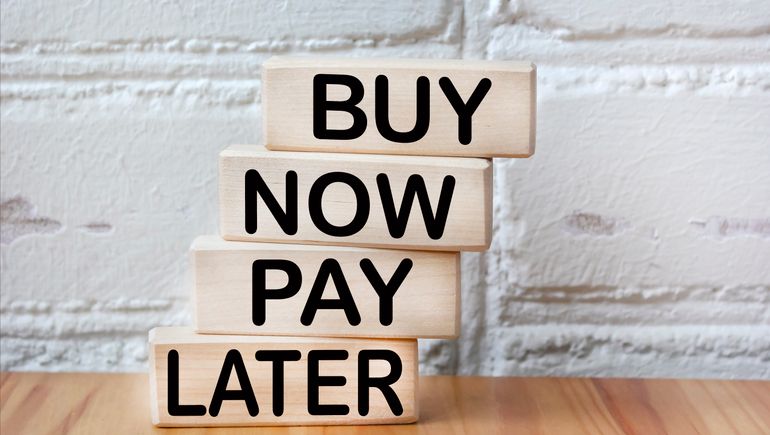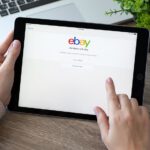Everyone’s buying now and paying later. At least that’s what the prevalence of BNPL buttons on online checkout pages would lead you to believe.
Buy now, pay later is point-of-sale financing that allows consumers to make a purchase and pay for an item or service over a set period of time, often without interest. It’s exploded in the past few years, appealing to consumers seeking quick access to credit or those turned off by credit cards. It’s also attractive to merchants — from retailers to restaurants — gunning to increase a shopper’s basket size or close a sale.
The payment trend first gained traction in Europe and Australia about a decade ago. In the U.S., BNPL took off with the rise of e-commerce during the COVID-19 pandemic. Consumers stuck at home and flush with cash tried the financing tool to buy clothes or home goods.
More recently, soaring inflation and high interest rates have inspired some shoppers to tap BNPL for everyday purchases, to spread out payments and avoid interest charges.
Using BNPL at checkout tends to be a seamless process for shoppers. That’s helped fuel its growth, especially with digital native generations that expect such experiences. “Being easy to use does matter when it comes to payment options,” said Sheridan Trent, director of market intelligence at The Strawhecker Group.

Sheridan Trent
Permission granted by Sheridan Trent
Initially, BNPL gathered momentum with millennial and Gen Z consumers, many of whom are turned off by credit cards, then it began drawing in other consumers, too. Nearly one-fifth of consumers have used BNPL during the past year, Federal Reserve Bank of New York researchers said in September.
How it works
BNPL is essentially the opposite of layaway, where buyers could only take home an item once it was paid off. BNPL enables shoppers to obtain an item right away, and then continue paying it off in the weeks or months that follow.
Consumers can access BNPL options through online checkout integrations on a merchant’s website or through BNPL providers’ apps or cards. Merchants are willing to pay higher fees for BNPL services than they would for credit card acceptance on the belief that customers will be enticed to spend more and complete the sale.
When a shopper chooses a BNPL company as their payment method at the point of sale, either online or in-store, the shopper gives the BNPL provider personal information such as address, phone number, date of birth or Social Security number. Then, BNPL companies typically perform a digital soft credit check within seconds before approving or denying a shopper for an installment plan.
The version of BNPL that’s most widely marketed by providers is an interest-free, pay-in-4 plan. Those offers allow consumers to make an initial payment when they buy an item, followed by three more payments, typically spread over six weeks.
For a $100 purchase, for example, a shopper would make an initial payment of $25, followed by three more payments of $25, at two weeks, four weeks and six weeks from the point of sale. Consumers make those payments with debit or credit cards, or sometimes through an auto-pay function tied to their bank account.
While BNPL companies play up their no-fee offerings, some providers do charge interest fees in certain instances, and some may also charge late fees.
For instance, San Francisco-based Affirm does far more interest-bearing, longer-term installment loan volume than it does shorter-term, fee-free lending. And its interest rate on the former could be as high as 36%. Pay-in-4 loans made up 19% of Affirm’s gross merchandise volume for the fiscal year ended June 30, according to the company’s annual filing with the Securities and Exchange Commission.
Big players in the market
BNPL’s explosion has drawn a number of competitors from across the world to the market, all eager to grab their share of the pie. That includes pure-play BNPL providers such as Affirm as well as banks, card networks and Cupertino, California, tech giant Apple.
Afterpay, founded in Sydney and now owned by Block, was the biggest player in the U.S. market for the second quarter, based on Bank of America Securities data for monthly active users, though the data didn’t include PayPal. Globally, Stockholm-based Klarna was the BNPL leader by that measure for the period.
Also jockeying for a piece of the action are Affirm; San Jose, California-based PayPal; Minneapolis-based Sezzle; and Sydney-based Zip. And some smaller competitors have sought to specialize in certain verticals, such as Uplift in the travel arena.
Klarna leads a pack of BNPL competitors
Average monthly active users at BNPL companies in the second quarter, domestically and globally
In the U.S., Klarna was second to Afterpay for the second quarter, averaging 3.31 million monthly active users, while Affirm averaged 3.26 million, according to the July Bank of America report. Monthly active users were those who opened the app at least once during the month.
PayPal declined to provide second-quarter figures, but as of the first quarter, 32 million customers had used the company’s BNPL service since its inception in 2020, a spokesperson said.
Meanwhile, Visa, Mastercard and American Express, and banks like JPMorgan Chase and Citi, typically offer existing cardholders the option to break a purchase into specific payments.
Apple launched its installment lending service, Apple Pay Later, this year – a move that has the potential to shake up a fast-changing market. Trent expects Apple is already gaining market share because the company is intent on making its service easy to use within its digital wallet.
Amid an intensely competitive environment, BNPL providers are still proving themselves to investors. They’ve largely posted losses in the past, and are under pressure from investors to post profits.
Consultants and professors have said that could be an uphill battle amid current market conditions. BNPL company job cuts have been widespread as the focus has shifted from growth to profits. Klarna posted a $1 billion loss for 2022, while rival Affirm reported a loss of $707.4 million in fiscal year 2022.
What’s next?
BNPL is here to stay, but it’s likely to become a more regulated, consolidated industry than it is now, said Ed deHaan, a professor at the Stanford Graduate School of Business. “I think we’ll see the weaker firms die out, other ones get consolidated and some version of the product will certainly emerge and continue to be popular,” deHaan said.
Consolidation has already begun. San Francisco-based Block, formerly known as Square, agreed to acquire Afterpay for $29 billion in 2021. Zip bought QuadPay in 2020, and made an attempt to buy Sezzle last year, but later abandoned the deal.
As far as regulation, the Truth in Lending Act applies to the longer-term, interest-bearing BNPL loans, but it doesn’t cover pay-in-4 loans because it only applies to loans with more than four installments or those that add finance charges.
From a regulatory perspective, “it’s kind of a Frankenstein product,” said Michael Guerrero, a partner at law firm Ballard Spahr.
As the Consumer Financial Protection Bureau has taken notice of BNPL, it has expressed concerns about BNPL users taking on too much debt and BNPL providers engaging in data harvesting.
In addition, the federal agency has urged credit bureaus to take a standardized approach to BNPL, but most of the installment providers still aren’t reporting their loan information to the credit bureaus. Guerrero expects the agency to clamp down on that BNPL-related issue.
In pursuit of profits, many BNPL providers have expanded the services they offer, including branching into areas such as marketing or shopping assistance. They’ve also introduced new products like debit cards and pushed their services further into brick-and-mortar commerce.
To grow their share of consumer spending, the BNPL providers are also trying to diversify their customer set, partly by courting older, more affluent consumers.
Given higher interest rates and increased costs to fund loans, BNPL companies may increasingly make interest-bearing loans more of a standard in the industry because they’re more profitable, Guerrero said.






